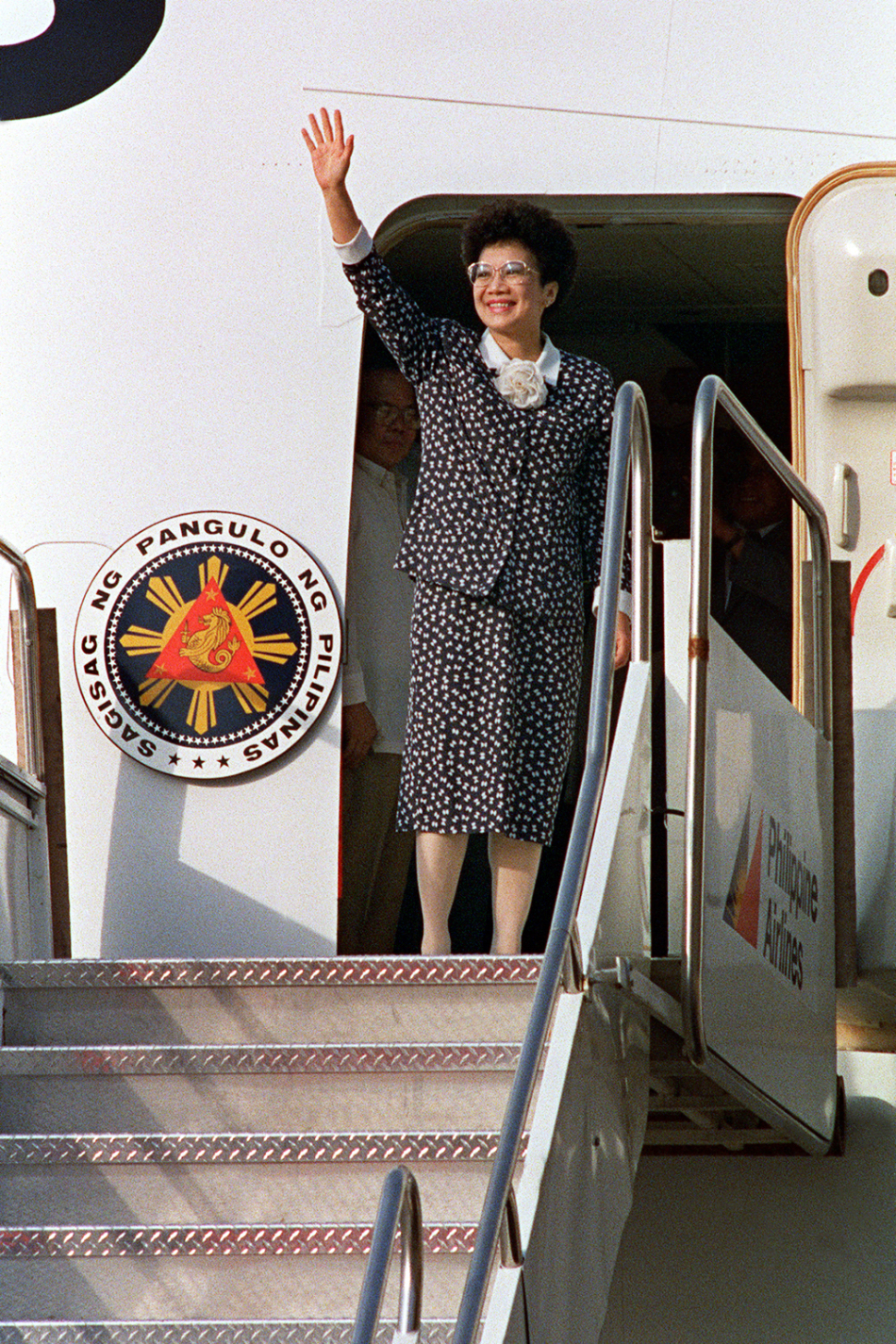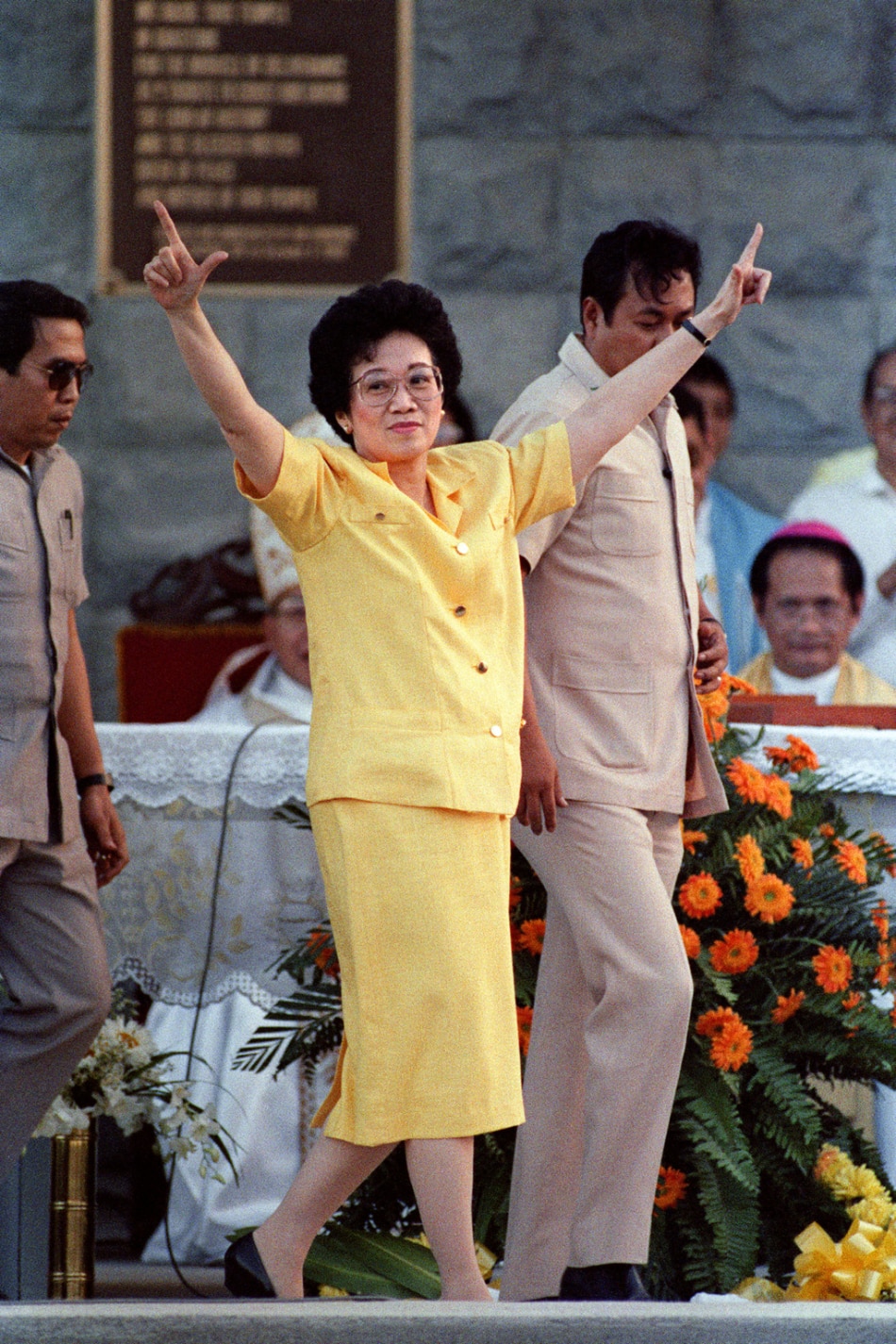Filipino couturier Auggie Cordero, most famous for designing the wardrobe of Corazon Aquino back when she was President of the Philippines, passed away Friday morning due to acute pneumonia failure and sepsis shock. This is according to his close friend, the editor Thelma Sioson San Juan, who writes in her website The Diarist that the designer was rushed to the Makati Medical Center Thursday “after he complained that he had difficulty breathing and his speech rather slurred.”
Cordero’s fashion career began in the 1970s and would continue to flourish onto the 1990s. His contemporaries were Larrie Silva, the great Joe Salazar, and Rusty Lopez. He won the Ramon Valera Award for Haute Couture in 1976, a recognition named after the National Artist and Father of Philippine Fashion. He would be brought to prominence via the period’s hotel luncheon fashion shows.
He was a recluse and a big reader, devouring the latest magazines from abroad and taking pride in knowing the latest movements in the international fashion houses. A big fan of Hollywood movies, he found inspiration in the wardrobes of Katherine Hepburn, Diane Keaton’s Annie Hall character, and the other silver screen Hepburn, Audrey, whom he adored most of all. “Moon River,” from “Breakfast at Tiffany’s,” was one of his favorite songs. He also designed clothes for movie stars like Pilar Pilapil and created the wardrobes for select lead actresses in the films of director Elwood Perez.
While largely catering to the older set in his later years, in a magazine article from the early 70s he is described as “a great favorite of the young” back when his ready to wear clothes can be found at Cinderella. “His clothes possess a great deal of movement, which for him is as important as style or comfort,” the write up says. It is also thanks to Cordero that local fashionistas took to the “Great Gatsby Look, gingham, eyelet Kimonas, and sequined denims.” He was known for modern, feminine ensembles, and in the 80s, would give the era’s famed power suits a softer touch with a bow or flower accent.
In 1986, when Corazon Aquino stepped in to fill the post of the country’s President after Ferdinand Marcos, Cordero was asked to design her clothes. Following the circumstances that brought about the widow’s rise to power, the opportunity sounded very daunting for Cordero: the whole world was watching the Philippines then, and watching Cory, too, its most prominent figure. Her first state visit in the US was to be the designer’s baptism of fire in dressing up a head of state—but the wrath of a strong typhoon in the Philippines would keep the new Commander in Chief unavailable for fittings. There were more important concerns to attend to, after all.
But the two did get to work soon after. “My first fashion impression of Mrs. Aquino was her practical, no-nonsense approach to dressing,” Cordero recalled to the writer Margie Penson Juico in the book “Cory, An Intimate Portrait.” “Her look was softly tailored. Her requirements were several suits in neutral colors. We decided on black and gray. She wanted comfort before trend. She liked her clothes easy to wear, separated, and classically designed, yet with a modern touch. We seemed to understand each other from the very start.”
In the same book, Cordero said it was Aquino’s daughter and “personal secretary” Ballsy who would get in touch with him for the President’s schedule and wardrobe needs. But there were times, too, when it was the President herself on the other line.
“I have fond memories of these phone calls. They would usually come after lunch, between 3 and 4,” the designer said in the book. “Mrs. Aquino and I would chat for, sometimes half an hour or so, about light subjects, never politics. She joked a lot and spoke in Tagalog. She was a smart, normal housewife talking to her fashion designer. This was perhaps the start of a remarkable professional relationship and a treasured friendship. I began to understand her taste and thinking about clothes.”
Their personal encounters, along with Cordero watching the President closely on television everyday, would eventually help the designer get a more intimate idea of what to make for his most important client—a VIP who is likely the complete opposite of some of the women who came to his atelier in Alonso Street in Malate. President Cory, as Cordero shared in the Juico book, “did her own make-up, trademark eyebrows and all, who could be fully dressed in thirty minutes flat, whose hair was not even blown dried.”
The relationship between the two would improve in her last four years in office. He would even, on occasion, be invited to dine with the family.
Needless to say, the 11th President of the Philippines found her match in Cordero. He was never into following trends, and had a very strong affinity for the classics. He liked the challenge of incorporating traditional Filipino touches in her outfits, which was required of those she wore to state dinners and travels abroad.
He kept things simple yet modern for her, with propriety always a big consideration. “In fact, I was quoted in TIME magazine as saying that I purposely did not design extravagant or ostentatious gowns for her,” Cordero recalled in the same book. “She wore my designs with honor and pride. She showed the world the elegant feminine Filipina heritage we were both proud of.”





